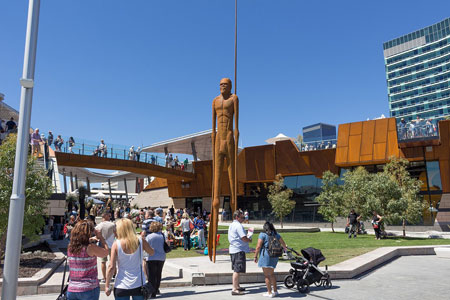Perth Translation Services » Advertising and Marketing Translation » Hungarian Translator for Advertising and Marketing Translation
Hungarian Advertising and Marketing Translation
Perth translation provides Hungarian advertising translations for various types of documents. We provide translation and typeset for brochures, websites, Powerpoint slides or other presentation files for business use.
Established since 2011, our full-services Hungarian <> English language services covers translation across a wide range of subject-matter including technical, medical and financial related documents.
Using the best translators for your advertising and marketing translations is critical for communicating your product or service to the right target audience. A professional translation company ensures quality checks and translators are carefully vetted before commencing on any translation.
Upload your documents for translation
Professional Hungarian Translator

Perth Translation provides professional Hungarian <> English translation services. You can use the form on this page to upload multiple files for a confirm quote and delivery time. Our Hungarian translator is ready to assist with your translation project.

Other Language Services We Provide
- Advertising and Marketing Translation Arabic
- Advertising and Marketing Translation Chinese
- Advertising and Marketing Translation Catalan
- Advertising and Marketing Translation Croatian
- Advertising and Marketing Translation Czech
- Advertising and Marketing Translation Estonian
- Advertising and Marketing Translation Dutch
- Advertising and Marketing Translation Finnish
- Advertising and Marketing Translation French
- Advertising and Marketing Translation German
- Advertising and Marketing Translation Greek
- Advertising and Marketing Translation Hindi
- Advertising and Marketing Translation Hungarian
- Advertising and Marketing Translation Indonesian
- Advertising and Marketing Translation Italian
- Advertising and Marketing Translation Japanese
- Advertising and Marketing Translation Korean
- Advertising and Marketing Translation Macedonian
- Advertising and Marketing Translation Malay
- Advertising and Marketing Translation Norwegian
- Advertising and Marketing Translation Persian
- Advertising and Marketing Translation Polish
- Advertising and Marketing Translation Portuguese
- Advertising and Marketing Translation Punjabi
- Advertising and Marketing Translation Romanian
- Advertising and Marketing Translation Russian
- Advertising and Marketing Translation Serbian
- Advertising and Marketing Translation Slovak
- Advertising and Marketing Translation Spanish
- Advertising and Marketing Translation Swedish
- Advertising and Marketing Translation Tagalog
- Advertising and Marketing Translation Thai
- Advertising and Marketing Translation Turkish
- Advertising and Marketing Translation Ukrainian
- Advertising and Marketing Translation Urdu
- Advertising and Marketing Translation Vietnamese
About the Hungarian Language
Hungarian is a Finno-Ugric language, which is a member of the Uralic language family. The group of Finno-Ugric languages also includes Finnish, Estonian, Lappic (Sámi) and some other languages spoken in the Russian Federation. Out of these it is Khanty and Mansi that are the most closely related to Hungarian. The Hungarian name for the language is magyar.
The traditional view holds that the Hungarian language diverged from its Ugric relatives in the first half of the 1st millennium BC, in western Siberia east of the southern Urals. The Hungarians gradually changed their lifestyle from being settled hunters to being nomadic pastoralists, probably as a result of early contacts with Iranian (Scythians and Sarmatians) or Turkic nomads. In Hungarian, Iranian loanwords date back to the time immediately following the breakup of Ugric and probably span well over a millennium. Among these include tehén ‘cow’ (cf. Avestan dhaénu); tíz ‘ten’ (cf. Avestan dasa); tej ‘milk’ (cf. Persian dáje ‘wet nurse’); and nád ‘reed’ (from late Middle Iranian; cf. Middle Persian nāy).
Archaeological evidence from present day southern Bashkortostan confirms the existence of Hungarian settlements between the Volga River and the Ural Mountains. The Onogurs (and Bulgars) later had a great influence on the language, especially between the 5th and 9th centuries. This layer of Turkic loans is large and varied (e.g. szó "word", from Turkic; and daru "crane", from the related Permic languages), and includes words borrowed from Oghur Turkic; e.g. borjú "calf" (cf. Chuvash păru, părăv vs. Turkish buzağı); dél ‘noon; south’ (cf. Chuvash tĕl vs. Turkish dial. düš). Many words related to agriculture, state administration and even family relationships show evidence of such backgrounds. Hungarian syntax and grammar were not influenced in a similarly dramatic way over these three centuries.
After the arrival of the Hungarians in the Carpathian Basin, the language came into contact with a variety of speech communities, among them Slavic, Turkic, and German. Turkic loans from this period come mainly from the Pechenegs and Cumanians, who settled in Hungary during the 12th and 13th centuries: e.g. koboz "cobza" (cf. Turkish kopuz ‘lute’); komondor "mop dog" (< *kumandur < Cuman). Hungarian borrowed many words from neighbouring Slavic languages: e.g. tégla ‘brick’; mák ‘poppy’; karácsony ‘Christmas’). These languages in turn borrowed words from Hungarian: e.g. Serbo-Croatian ašov from Hungarian ásó ‘spade’. About 1.6 percent of the Romanian lexicon is of Hungarian origin.
Recent studies support an origin of the Uralic languages, including early Hungarian, in eastern or central Siberia, somewhere between the Ob and Yenisei river or near the Sayan mountains in the Russian-Mongolian borderregion. A 2019 study based on genetics, archaeology and linguistics, found that early Uralic speakers arrived from the East, specific from eastern Siberia, to Europe. Today the language holds official status nationally in Hungary and regionally in Romania, Slovakia, Serbia, Austria and Slovenia.

